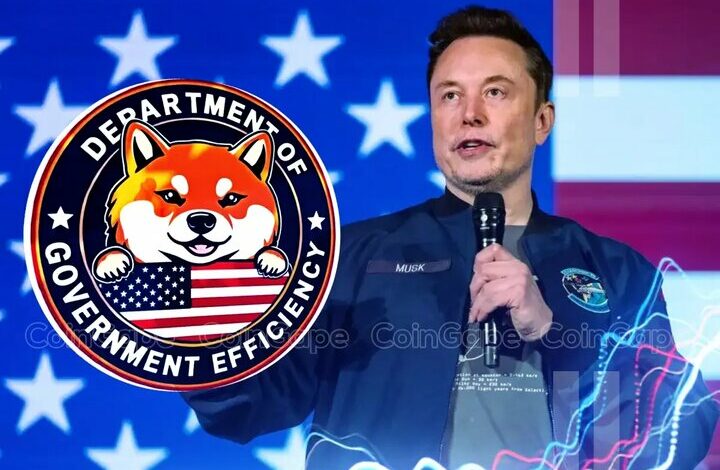Government or Commercial Enterprise? Analyzing the Causes of Elon Musk’s DOGE Plan Failure Under the Trump Administration

Mehr News Agency, international Desk – mohammad Amin Niksefat: In November 2024, then-President Donald Trump announced that Elon Musk and Vivek Ramaswamy would lead a new government department called the Department of Government Efficiency (DoGE). Launched with heavy publicity, this project aimed to save resources and improve efficiency across government institutions. After Ramaswamy’s resignation, Elon Musk-renowned for his technological ventures and one of the world’s wealthiest individuals-assumed full leadership of the initiative. According to its manifesto, DoGE intended to save $2 trillion over 18 months by optimizing expenditures through reforms in various departments, contracts, and administrative procedures.
Following the inauguration of Trump’s management, DoGE began by informally recruiting “revolutionary elites” who supported downsizing government and were willing to work without pay. The early measures included merging several agencies,canceling certain contracts,auditing departmental efficiency across government sectors,as well as increasing working hours and imposing stricter oversight on federal employees.
The plan also relied on technology tools such as AI chatbots for data analysis aimed at improving public service delivery in education, housing, healthcare services-and expanding digital infrastructure for data integration. These technologies were expected to help combat bureaucratic corruption while enhancing overall governmental effectiveness; still-even with these efforts-the project collapsed far sooner than anticipated. Official reports show savings of only $175 million during this period-a figure some analysts argue is inflated or significantly overstated.
this raises a critical question: Why did DoGE fail so decisively despite widespread promotion and direction by prominent economic leaders? Moreover, why did this failure contribute to severe tensions between Musk and Trump after Musk left the administration? This issue can be examined from two perspectives: first a ancient view focusing on foundational causes; second an institutionalist perspective addressing contrasting philosophies between DoGE’s principles and U.S. governmental structures.
Historically speaking, modernity swept through every facet of human life like a storm-from arts and literature to technology-shaping political-economic-cultural-social paradigms that fostered distinct lifestyles. Governments underwent profound transformations during this era; eighteenth-century absolutism gave way to institutional developments grounded in social contracts defining new relationships between rulers and citizens. Institutional expansion became hallmark for strong modern states yet DoGE presented essential contradictions with these principles.
Musk entered government not via traditional political pathways but as an outsider known primarily for private-sector success-a move that predictably spurred resistance within bureaucracy accustomed to established norms. For instance, musk often appeared casually dressed at White House meetings, speaking informally contrary to official protocol requiring formal decorum by officials operating under social contract norms where governments serve citizens by maintaining order delivering public goods toward citizen welfare-not merely functioning as economic enterprises selling goods or services.
This reveals a key insight: The atmosphere inside government markedly differs from entrepreneurial or commercial environments.
Saskia sazukato (2013), in her book The Entrepreneurial State, challenges notions about governments’ irrelevance in economic advancement-arguing successful states actively act entrepreneurially through risk-taking investments building infrastructure/markets fostering innovation themselves rather than purely facilitating others’ initiatives.
Despite current bureaucratic weaknesses Doge treated government mainly as an obstacle blocking innovations instead of partner enabling improvements-which contributed significantly toward its downfall according to Sazukato’s framework:
- Lack of Stable Institutional Framework:
Diverging from historically rooted governmental institutions-which are subject to evaluation reform learning-doge operated over temporary unaccountable platforms offering no continuity or oversight mechanisms which many experts deemed unrealistic given their enterprising claims.
- Focus on Cost Reduction Instead of Strategic Investment
The state presence remains necesary even when limited-with public funding via taxation essential-for funding societal needs including public services; however Doge emphasized cutting costs sharply including scaling back social programs/service quality leading directly toward heightened public dissatisfaction.
- Lack of Transparency & Accountability
A defining feature among modern democracies is transparency coupled with accountability especially concerning fiscal matters & decision-making processes; critics note that DoGE failed profoundly here-with erratic financial reporting & removal later online records relating canceled contracts creating opacity undermining trustworthiness considerably.
- Ecosystem Mismatch Between Government & Private Sector
The integration ofin technologies into governance ideally creates what is termed GovTech ecosystems enhancing efficiencies collectively; however doge approached governance solely from market lens ignoring intrinsic governmental institutional traits resulting poor cooperation/innovation spillovers limiting private sector efficacy ultimately damaging Elon musk’s reputation whilst negatively impacting Tesla’s stock value further intensifying fallout caused internally within both spheres involved .
a flawed understanding rooted solely in economics coupled with misreading public sector nature led methodological errors derailing DOEG implementation thus failing expectations disastrously;The state does not operate like profit-centered corporations targeting specific customer bases governed exclusively through market dynamics-but rather underpins social existence abiding contractually representing all citizens equally engaged within ecosystem pursuing ordered coexistence prioritizing improved living standards welfare security collectively shared interests consistent throughout governing frameworks .


